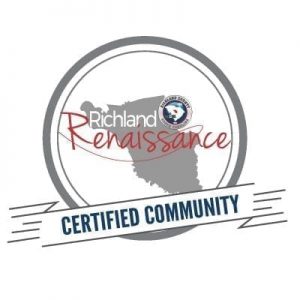Richland Renaissance … the County’s Cure to Blight Blind Syndrome
March 15, 2018It’s one thing, as a popular air freshener company suggests, to get accustomed to foul odors.
Richland County is working to ensure no one is similarly desensitized to unpleasant community conditions. As part of Richland Renaissance, an effort is underway to prevent anyone from going, well, blight blind.
“Richland County Government employees work daily to serve residents, so it goes to reason that addressing blight and all the negative aspects it attracts would be a primary way in which we serve,” said Joyce Dickerson, Chair of Richland County Council. “People tend to get used to abandoned buildings and junk piles – and even crime – but none of this is acceptable. Now, we have a tool to help us streamline and maximize our efforts to work with our citizens to address these problems.”
Richland County launched an initiative that builds upon existing efforts to address dilapidated buildings, illegal dump sites and other instances of decrepitude that affect livability and economic development. The multi-pronged strategy is called Revivify Richland.


It’s more than a plan to clean up trash. Whereas Richland Renaissance focuses on capital improvements and positioning the County to better serve residents, the aim of the Revivify Richland component is to improve the quality of life of all residents.
Dickerson and many of her Council colleagues have pointed out areas in their districts that will benefit from the Revivify effort and are working to make sure County staff is responsive.
Richland County’s planning staff identified 16,000 instances of blighted conditions in Richland County and prepared a report that detailed its efforts to identify, inventory and assess blight. Indicators contributing to blight include illegal dumping sites, litter, debris, dilapidated structures, abandoned vehicles, overgrown lots, vacant buildings, foreclosed properties and more. In some cases, one site might exhibit several instances of blight.
Blight is problematic throughout Richland County and the October 2015 floods exacerbated the issue in some neighborhoods. As if that weren’t bad enough, research shows blighted conditions contribute to a number of troubling outcomes. Consider the following:
Economic factors:
- Reduced property values and property tax revenues or assessments of properties adjacent to the blighted area
- Decline in property sale transactions, construction loans and building permits
- Lack of public investment in infrastructure
Social factors:
- Social-psychological stigmas
- Perceptions of public safety and fear
Governmental factors:
- Costs for increased calls for service (law enforcement, fire and emergency medical care)
- Costs for enforcement actions
- Nuisance abatement costs to remove blight
- Environmental cleanup costs; in some cases, maintenance costs of vacant lots, etc.
Environmental factors:
- Blighted neighborhoods can affect a community’s health
- Poor health is linked to poor physical and mental health conditions, including cardiovascular disease, injury, depression, post-traumatic stress disorder and substance abuse
- Blighted areas are more prone to instances of crime assaults and burglaries
In other words, blight costs. Yet, County officials realized some people don’t pay attention to it or accept it as something they can do nothing about. Blight blindness is real. But is it really possible to clean up Richland County? The answer is simple. Yes.
“County residents, no matter where they live, should not have to tolerate or accept neighborhoods with unlivable conditions,” said County Administrator Gerald Seals. “Tax dollars should be used equitably to ensure communities throughout the County are places where anyone would be proud to call home and the County has positioned itself financially to fund the efforts outlined under the Revivify plan.”
Revivify Richland advances a strategy to:
- Revitalize neighborhoods through beautification efforts, enhanced code enforcement and increased awareness
- Install lighting to eliminate dark areas in the County
- Install gateway parks and signage to welcome visitors and extol the County’s position as South Carolina’s Capital County
- Spur economic development
- Eliminate notorious trash dumping sites
- Facilitate improved public health
- Prompt crime reduction
Several tactics already are underway to support the County’s longstanding existing efforts, such as the well-known Clean Sweeps. The County launched a pilot program that encourages employees to look out for issues and to report them through a mobile app so that situations can be addressed promptly. The goal is to release the app to residents later this year. Street lighting has been added to some communities and major clean-up campaigns have occurred, with more planned. In addition, the County is looking to start an incentive program to encourage residents to keep their communities clean by becoming a “Renaissance Certified Community.”
“Local government working with the residents it serves is the best way to solve community problems,” Seals said. “Revivify Richland should open people’s eyes to the blight that is all around us and provoke a desire for systemic change. This initiative is one of the key aspects of Richland Renaissance we believe will engender a desire for sustained community involvement. Revivify Richland goes beyond the halls of government and into the heart of where people live their lives every day.”


















